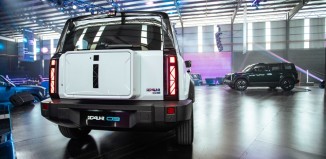BMW 5-Series is 30 Years Old
Not many may realise it but this September month marks the 30th anniversary of BMW’s mid-range model, the 5-Series.
It was in 1972 that the model got its modest introduction to the world as the 520, a sporty and elegant four-door with a peppy 85 kW(115 bhp) 4-cylinder engine. The 520, as the first of the 5-Series, made its appearance in Europe and was built in Munich, Germany, following the end of the 1972 Olympic games and the completion of the landmark BMW “Four Cylinder” building which is the BMW Group’s headquarters.
12,895 units were built in the Munich factory before production was shifted to the new plant at Dingolfing a year later. Exports worldwide began and the new series went on sale in many countries, including Malaysia, where it was sold by Continental Motors, the official importer in the 1970s.
The idea for a mid-sized BMW sedan had originated back at the end of the 1950s. At that time, BMW’s marketing people wanted to develop the kind of automobile that did not exist: comfortable enough for five people and agile enough for a lively, spirited drive. The new 5-Series quickly became the central pillar of BMWs product philosophy and remains an important model in the company’s line-up that has broadened considerably to include sportsters and SUVs.
However, in considering the history of the 5-Series, one should really include the BMW 1500 which came out in 1962 as well as the 6-cylinder models like the 2500/2800 and 2800 CS coupe which appeared in the late 1960s and launched BMW into a whole new realm.
The basic concept of the BMW 5 Series – taken from the description of the 1500 – has been retained consistently, but has also been refined and updated over the decades. The product substance has always made the 5-Series a trendsetter: elegant, comfortable, sporty and practical at the same time, setting standards in both active and passive safety – in short, a car that appeals to both reason and emotion.
From 1972 to 1981 the first 5-Series was offered in six different engine capacities, from the 518 with 66 kW(90 bhp) to the high-performance M535i with 160 kW(218 bhp). Local assembly in Malaysia (in Kuching, Sarawak) began in 1982 with the second generation, by which time more engine choices were offered, including a diesel that impressed many people and also an eta version which was a highly efficient power unit.
The third generation 5-Series started in 1987 and by then, the M5 had become a much-respected (and desired) model on its own. In 1991, the 5-Series diesel made a big leap forward with the introduction of a turbocharged 105 kW(143 bhp) engine while in 1992, another significant increase in performance came with the introduction of 8-cylinder models.
Today, the fourth generation of the 5-Series is still considered as a technically advanced model. Two bodystyles – sedan and sports wagon – are available while engine outputs range from 100 kW(136 bhp) to 294 kW(400 bhp) in the M5. In Malaysia, the 5-Series is available as a Completely Built-Up (CBU) import as well as a locally-assembled version which originates from AMI in Shah Alam, Selangor. And in case you still don’t know, BMWs are today distributed in Malaysia by two parties – Auto Bavaria for the locally-assembled units and Cartrade Sdn Bhd for the imports.
With their wide range of technical innovations, the 5-Series cars have set standards in terms of driving characteristics, active and passive safety, individual comfort and economy. Numerous accolades from the automotive press in many countries, providing independent confirmation of its superior design and engineering.
From records available, the production figure for the first 5-Series, made between 1972 and 1981, reached 699,094 units. The second generation, produced from 1981 to 1987, totalled 722,328 units while the third (1987 – 1996) saw production figures rise to 1,333,438 units sold worldwide. The current version – launched at the end of 1995 in Europe – has already reached a production level of over 1.3 million vehicles.























